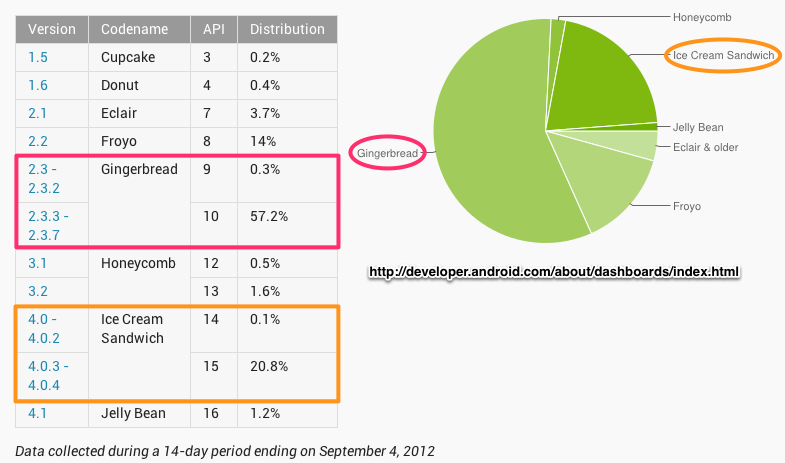
As you can see, the majority of the devices out there, close to 60%, are still 2.3 (Gingerbread). This is followed by ICS with close to 21%. Froyo 2.2 is 14%.
I hope that by March (but more likely, summertime or later) of 2013, that by then the majority of the Android devices out there are 4.0+. This would make the Android app developer’s life in general much simpler — by (1) minimizing the number of major Android platforms to deal with, and (2) making it easier/cheaper to implement (or move up to) the recommended Android design guidelines. The result of this includes (1) cheaper to develop/maintain apps, (2) consistent apps per developer, and (3) consistent look/feel/behavior across the app market.
For this to happen, device manufacturers and operators must help transform the above piechart to be mostly 4.0+ Android devices. They can help by literally selling less (and even better, stop selling) Gingerbread/2.3 and older devices. If you look around you will see that operators are still selling Gingerbread devices. And we need Google to have more cojones with respect to this and stimulate, if you will, both the device manufacturers and operators to move forward — this transition is taking forever! (Note: Gingerbread was introduced on December 6, 2010.)
Some customers may leave feedback as “why the app does not follow the Android UI guidelines”, or “why the app doesn’t support the ICS UI paradigm” — but again, 4.0+ is just a smaller fraction of what is out there!
In the meantime, there is the Android Support (Compatibility) library. Also, see Backwards Compatibility (Android Design Patterns).
ceo